Light tanks of France in the interwar period
Tank doctrine of the French military
After the end of the First World War France had the most numerous tank park in the worldhowever, until 1935 only about 280 new ones were released tanks. The French military considered themselves winners and thought in terms of the past war, they looked at tanks based on the accepted military doctrine. This doctrine was purely defensive and did not consist in delivering preemptive strikes against the enemy, but in an attempt to halt the enemy’s advance and exhaust him in the hope of converting the war into a positional form, as was the case in the previous war.
In the tanks, they saw not a means of breaking through defenses and penetrating into the depths of the enemy’s territory, but a means of supporting infantry and cavalry, which remained the main arms of the troops. The main tasks of the tank were to support the maneuver and the advance of infantry and cavalry. Based on this, the corresponding requirements were imposed on the tanks. Tanks were considered "stumbling, semi-blind bunkers on tracks", which were supposed to have anti-personnel weapons and protection from small weapons and field artillery.
At that time, there were no armored forces in the French army, tanks were scattered among infantry and cavalry formations, which independently ordered equipment for their needs. So in France appeared "infantry" and "cavalry" tanks.
After the Nazis came to power in Germany, they adopted the "blitzkrieg doctrine" based on achieving lightning victory by using large tank formations to break through on a narrow sector of the front and penetrate deep into enemy territory, in France they did not change their doctrine, same direction. The main tanks of the French army remained light infantry and cavalry support tanks with machine guns and a small caliber cannon armament, with anti-bullet and anti-rifle protection from field artillery.
In addition, within the framework of the “battle tank” concept there should be medium and heavy tanks capable of conducting independent combat operations and withstanding enemy tanks and anti-tank artillery.
The main tank in the army remained light tank FT17 and its modifications, which showed itself well in the previous war. In the interwar period, a whole family of light tanks for the needs of infantry and cavalry was also developed and put into production.
Light tank FT17
The FT17 tank was the world's first classic-style tank with a rotating turret designed in 1916 and became the most massive tank of World War I. In the previous part, I described in detail its design and characteristics. It was a light tank of riveted construction weighing 6,7 t, with a crew of 2 man, with 37-mm gun “Hotchkiss” or 8-mm machine gun “Hotchkis”, differentiated armor 6-16 mm, with engine 39 hp, developed speed 7,8 km / h and had a power reserve 35 km.
This tank became the prototype of many French light tanks and tanks in other countries. The tank has undergone a number of modifications: FT 18 - with the SANNXX 37-mm gun, FT 18 - with the Hotchkiss 31-mm machine gun, Renault BS - with the Scheider 8-mm howitzer, Renault TSV - unarmed radioactive tank with the 75 man’s crew, RenaultXXXXX man, RenaultXXXXXXX-mm howitzer NC3) - elongated rear part of the hull, 1 engine power hp, power reserve up to 27 km, RenaultNC60 (NC100) - running with eight road wheels, balanced suspension, rubber-metal caterpillar, 2 engine hp, speed 31 km / hour, power reserve 45 km.
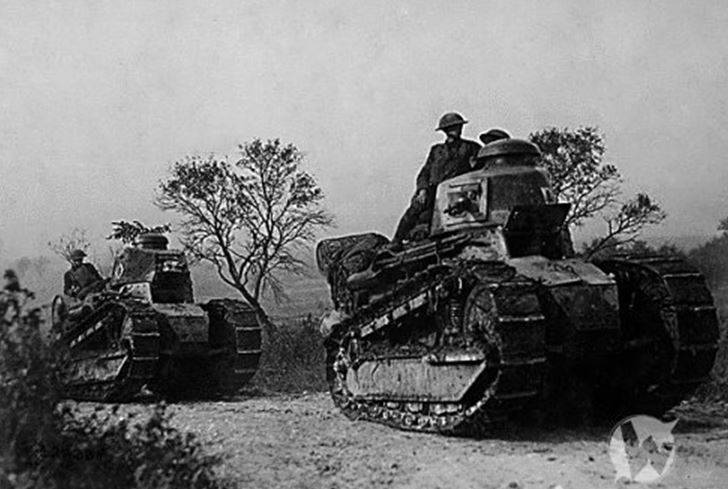
Modifications of the tank were widely used in the French army and exported to many countries around the world. The FT17 tank was in service with the French army before the start of the Second World War; in total, 7820 tanks were launched.
Light tank D1
The D1 tank was created in 1928 on the basis of the Renault NC27 tank as an infantry escort tank and had a classic layout - the control compartment in front, in the center a rotating turret with a fighting compartment and behind the MTO. By increasing the width of the tank, it was possible to bring the crew to the 3 man - the commander, radio operator and driver.
The driver was located on the left in the housing in the wheelhouse with a three-leaf hatch. He could fire a course 7,5-mm machine gun Reibel, to his right was a radio operator. Due to the fact that the tank was equipped with a radio station, a double-beam antenna was installed at the stern, because of this, the tower was rotated only 345 degrees.
The 47-mm SA34 cannon with a paired 7,5-mm machine gun was installed in the turret. On the roof of the tower was a domed commander's cupola from which the commander could observe.
The hull design was riveted from rolled armor plates, with the weight of the 14 tank t it had enhanced armor, the thickness of the armor in the front part of the hull and the top sides was 30 mm, the bottom part of the 16 (25) mm, the roof and the bottom of 10 mm. At the stern of the tank remained the traditional "tail" to overcome obstacles.
As the power plant on the tank, the Renault engine with an 65 hp power was used, providing 16,9 km / h speed and 90 km cruising range.
The chassis D1 contained on one side of the 12 track rollers interlocked in three spring suspension trucks (one for each trolley), 2 independent track rollers with hydro-pneumatic shock absorbers, 4 supporting rollers and high-speed track.
The tank was mass-produced in 1932 — 1935. 160 samples were produced.
Light tanks AMR33 and AMR35
The AMR33 tank was developed in 1933 year as reconnaissance for cavalry and infantry formations. Serially produced in 1934-1935's, all produced by the 123 sample.
It was a lightly armored vehicle with a 2 man’s crew and a 5,5 weight. The driver was located in the front left housing, the commander was in the turret and could fire from the 7,5 mm Reibel machine gun mounted in the turret in the ball mount. The turret of the tank was shifted relative to the longitudinal axis to the left side, and the Reinstella engine to the right.
The design of the squat hull and the hexagon tower was riveted from rolled armor plates mounted at small angles of inclination. Reservations were weak, the forehead is 13 mm thick, the 10 mm beads and the 5 mm bottom.
As the power plant, an Rheinastella engine with an 82 horsepower, providing speed along the highway up to 60 km / h and good mobility, was used.
The chassis on each side consisted of four rubber-coated road wheels, two of which were blocked in one bogie and four support rollers with rubber bands.
In 1934, Renault developed a more advanced modification of the AMR33 tank, which received the AMR35ZT index. While maintaining the layout of the tank, the hull was increased, a large-caliber 13,2mm machine gun was installed in the turret, the weight of the tank increased to 6,6. The tank was serially produced from 1936 to 1940 of the year, a total of 167 samples were produced.
Light tanks AMC-34 and AMC-35
The AMC-34 tank was developed in 1934 in the development of AMR 33 as a cavalry support tank, produced in 1934-1935, 12 samples were released. The tank was 9,7 T in weight and was produced in two versions - with the AMX1 turret with the Hotchkiss 25-mm cannon and two crew members and the AMX2 turret with the SA47-34-mm gun, and three crew members.
The hull was a riveted structure, tower cast. Reservations were at 5-20 mm. Engine Renaull power 120 HP provided speed on the highway 40 km / h and power reserve 200 km.
In 1936, a modification of the AMC-34 tank was developed, which received the AMC-35 index, which was produced before the 1939 year, in total, 50 samples were manufactured. The size of the tank was increased, it began to weigh 14,5t. A more powerful SA47 35-mm gun with a 32 barrel caliber was installed, the 7,5 mm machine gun was preserved. Reservations have been enhanced to the level (10-25) mm, a more powerful 180 hp engine is installed.
Light tank R35
The most massive French light tank R35 was developed in 1934 year to accompany the infantry, made in 1936-1940 years, 1070 vehicles were produced for the French army and 560 for export.
The tank had a non-classical layout, the power plant was located behind. The transmission in the frontal part, the control compartment and the fighting compartment with a rotating turret in the middle of the tank. The crew was two people - the commander and the driver.
The hull design was assembled from sheets of armor and armor castings by welding and bolts. The lower part of the hull sides were from sheets of armor with a thickness of 40 mm, the bottom was also from armor plates with a thickness of 10 mm. The front part of the hull is 40mm thick, the upper part of the 25-40 mm thick hull and the hull forage 32mm thickness were cast from armored steel. The turret was entirely cast from armored steel with 40 mm sides, inclined at an angle of 24 degrees to the vertical and 25 mm roof thickness. On the roof of the tower was installed cast swivel dome with vents. In the roof of the tower was also a flap for flag signaling. The weight of the tank 10,5 t.
The 37-mm SA18 cannon and the twin-machine gun 7,5-mm were installed in the turret. For aiming the weapon the telescopic sight mounted to the left of the gun was used. On the modification of the tank R 39 was installed gun SA38 of the same caliber with an increased barrel length.
The engine used was an 82 horsepower engine, which provides 23 km / h speed and 140 km power reserve.
The chassis on each side consists of five rubber-coated single road wheels and three rubber-supported rollers. Four support rollers were interlocked in two “scissor-type” carts, consisting of two balancers pivotally fixed among themselves, the upper parts of which are pivotally interconnected through an elastic element. The fifth roller is suspended on a balance bar, the spring of which is connected at its other end to the tank hull. The finely divided caterpillar consisted of 126 tracks 260 mm wide.
Light tank H35
The H35 light tank was designed in 1934 for supporting cavalry units and was maximally unified with the R35 infantry support tank. 1935 to 1940 Approximately XXNX samples were produced.
The layout of the tank was similar to that of the R-35 tank; the cast parts, bolted together, were also widely used in the tank design. The cast tower was borrowed from the R35 tank. The thickness of the hull armor was 34 mm, towers 45 mm. The weight of the tank was 12 t, the crew of the 2 man.
The armament of the H35 consisted of an 37-mm SA18 cannon and an 7,5-mm Reibel machine gun paired with it.
The engine used was an 75 hp engine, providing 28 km / h speed and 150 km cruising range.
To eliminate the shortcomings of the H35 in 1936, an upgraded version of the H38 was developed, the hull armor was increased to 40 mm and the 120 hp engine was installed. The weight of the tank rose to 12,8 t, but the speed rose to 36,5 km / h.
In 1939, the H39 version was developed with frontal armor reinforced to 45 mm and the long-barreled 37-mm SA38 cannon. Outwardly, this tank had a higher and more angular engine compartment, extended to 270 mm caterpillar. According to the speed characteristics, the Н39 remained at the Н38 level, but the power reserve decreased to 120 km.

Light tank H39
The tanks of these models took part in the hostilities at the beginning of the Second World War and could not seriously oppose the German tanks.
Light tank FCM36
The FCM36 tank was developed in 1935 during the competition for the development of an infantry support tank; the main competitors were the H35 and R35. Total order was released 100 samples of these tanks.
The layout of the FCM36 infantry tank was “classic”; the crew of the tank was a 2 man. In front of the case there was a place for the driver, behind him was the commander, who simultaneously served as the shooter and loader. The outdated short-barreled 37-mm SA18 cannon and the twin machine gun 7,5-mm were installed in the turret. The tower was made in the shape of a truncated pyramid with four viewing devices, the gun and machine gun were installed in a common mask, which allowed to direct weapons in a vertical plane ranging from -17 ° to + 20 °. The weight of the tank was 12 t.
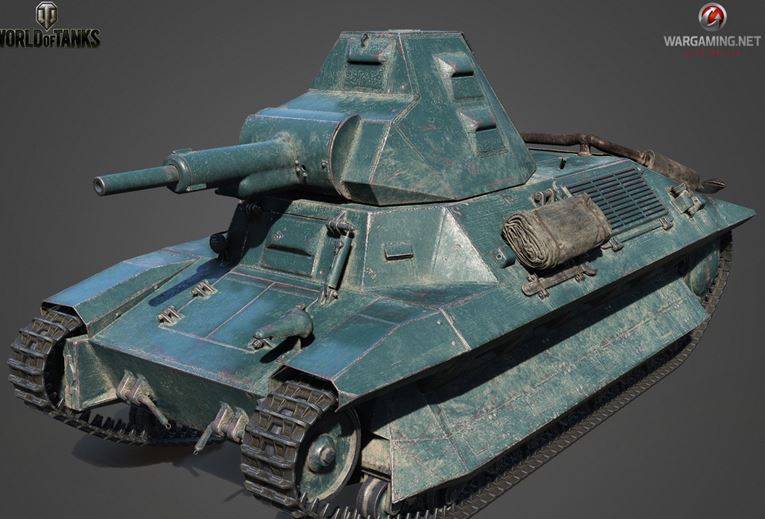
Light tank FCM36
A number of fundamentally new design solutions have appeared to this tank. The design of the tank was more complicated than that of the Х35 and R35, the armor plates were located at rational angles of inclination, the hull and tower were not riveted, but welded. The tank had a good counter-booking, the thickness of the armor of the turret, forehead and hull sides was 40 mm, the roof 20mm.
The undoubted advantages of this tank were the installation of a Berliet diesel engine with an 91 hp power, providing 25 km / h speed and significantly increasing the cruising range of the tank to 225 km, almost doubling it compared to other tanks.
These innovations and ideas with inclined armor plates and a diesel engine were subsequently used in the development of the Soviet T-34 tank.
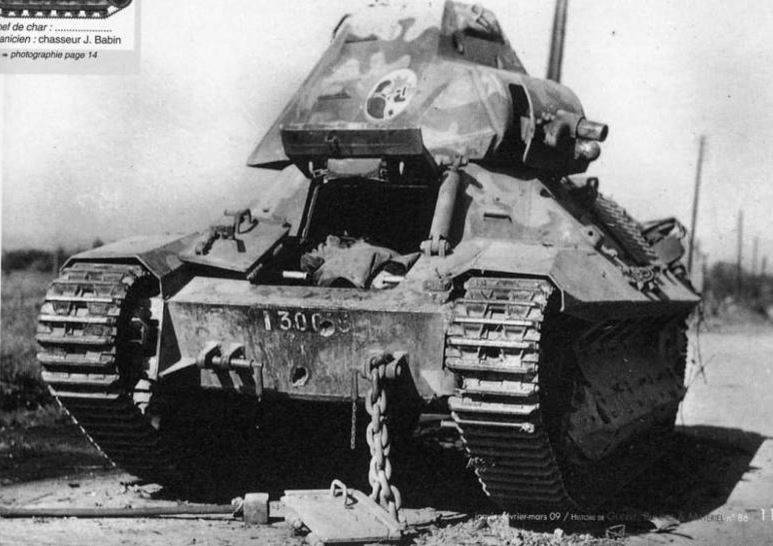
Light tank FCM36
The undercarriage of the tank was also quite complex. On each board, it consisted of 9 track rollers, eight of which were interlocked in an 4 bogie, four support rollers, a front idler and a rear drive wheel. The rollers and the external elements of the transmission were almost completely closed by a bulwark of complex shape, which had cutouts for dumping dirt from the upper branches of the tracks.
Light tanks of France before the war
The family of light tanks developed during the interwar period was distinguished by low weight, mainly up to 12 tons, crew of two, less often three people, machine guns, 37-mm and / or 47-mm cannon armament in various combinations, mainly with anti-bullet armor on samples from the middle of 30-ies and with antislatter booking, using gasoline engines, providing speeds up to 60 km / h. Fundamentally different tank FCM36, which was installed a diesel engine, riveted hull structure and turret was replaced by a welded and provided protivosnaryadnoe reservation.
In the interwar period, the 7820 light tank of the new models was produced for the 17 tanks of FT2682 and its modifications, much of which were used in the army, but in terms of the required tactical and technical characteristics and tactics of using tanks they are in many ways inferior to the German tanks, and at the beginning of the Second World War it was clearly demonstrated.
To be continued ...

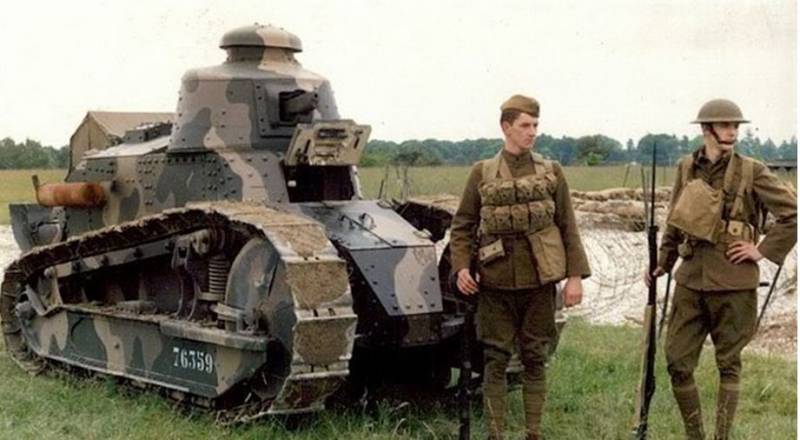
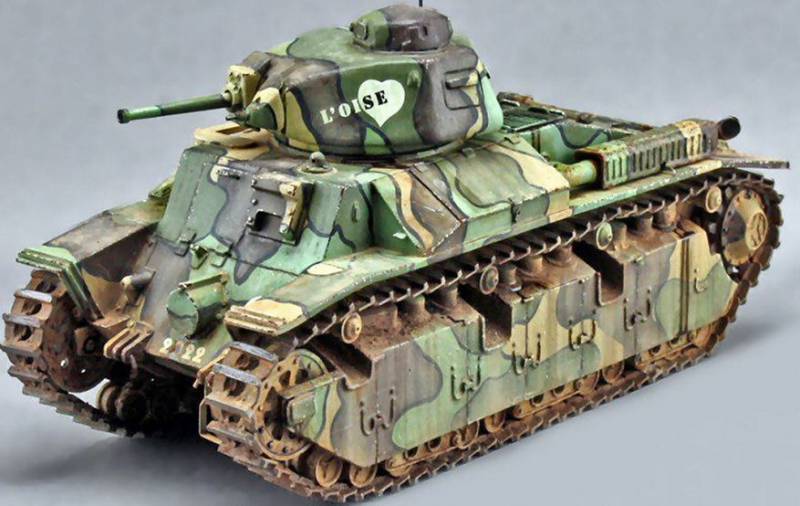
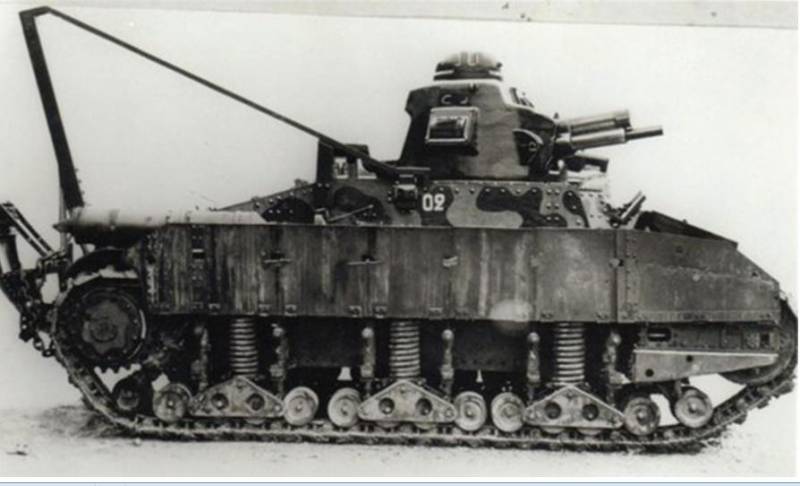
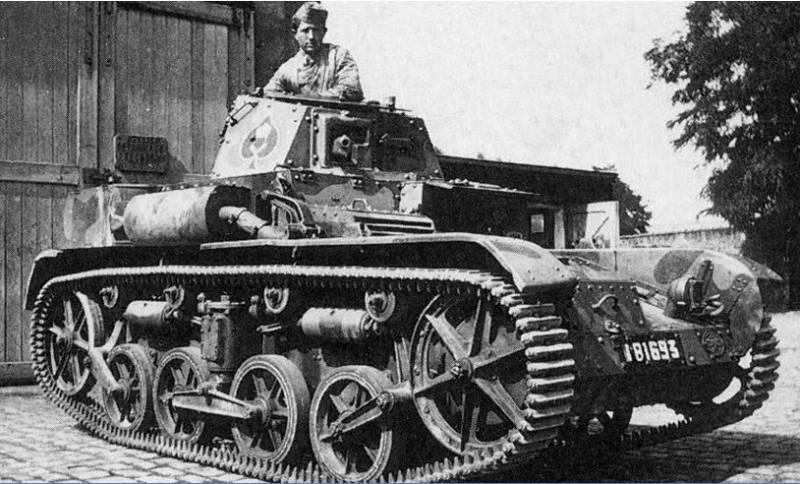
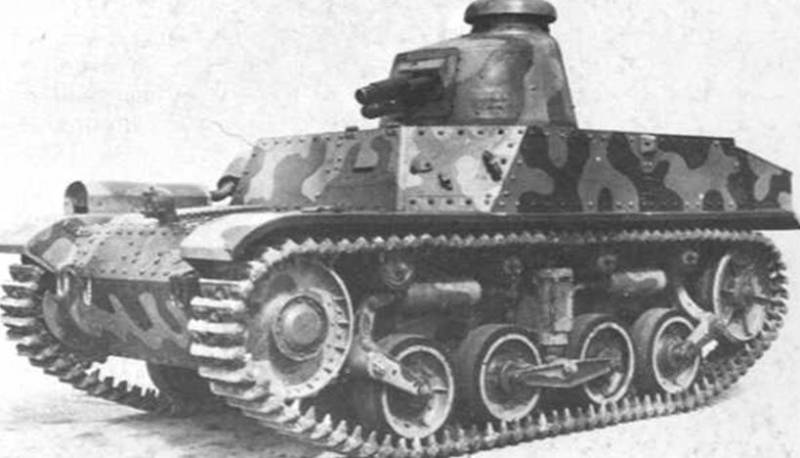
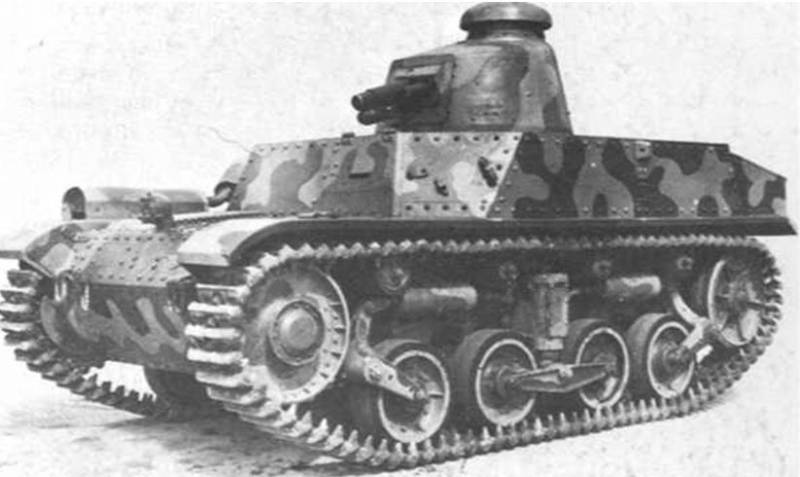
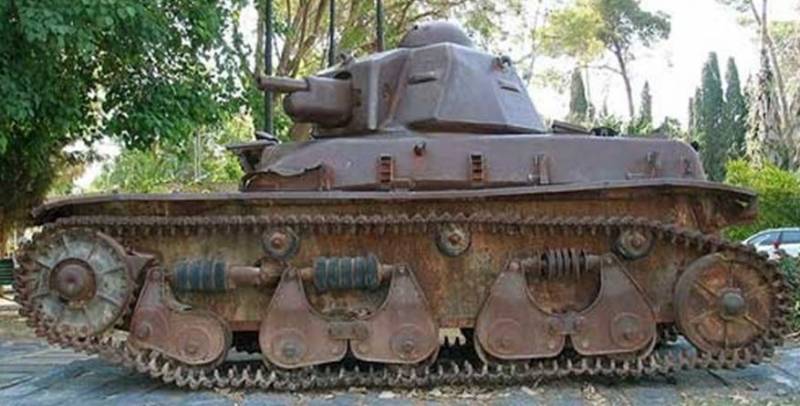
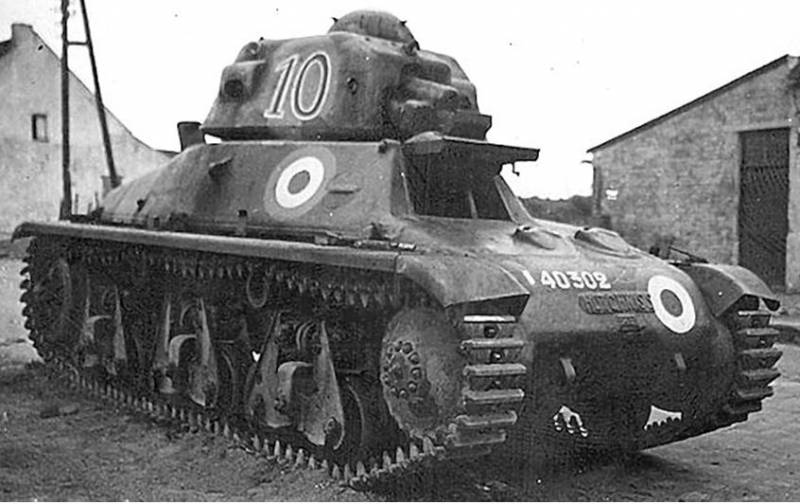
Information